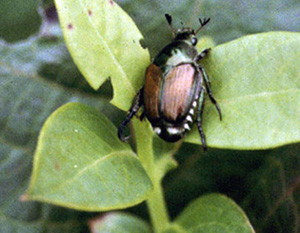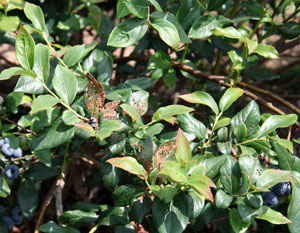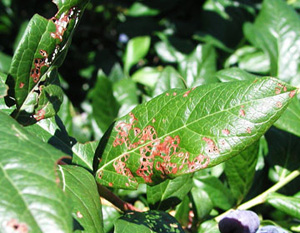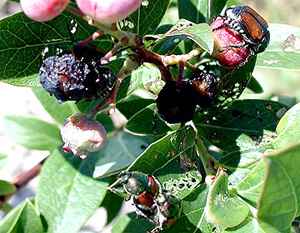Potential causes:
Japanese Beetle
Japanese Beetle (Popillia japonica) adults feed on blueberry leaves:


Feeding damage on leaves:

Adults may also feed on the skin of berries.

More Japanese beetle information.
Gypsy Moth
Gypsy moth (Lymantria dispar) larva may be an occasional pest on blueberry leaves when outbreaks of the insect occur. Young larvae are carried by wind from adjoining wooded areas to plantings during bloom.

Larger view of gypsy moth larva
They are voracious eaters and often leave only the veins remaining after feeding.

Larger view of gypsy moth damage to leaves
Hail
Hail may seriously damage canes, leaves, and fruit. Hail damaged leaves have large holes and/or appear shredded and torn.

See also Miscellaneous Fruit Damage (Michigan State University) for pictures of hail damage to fruit.


